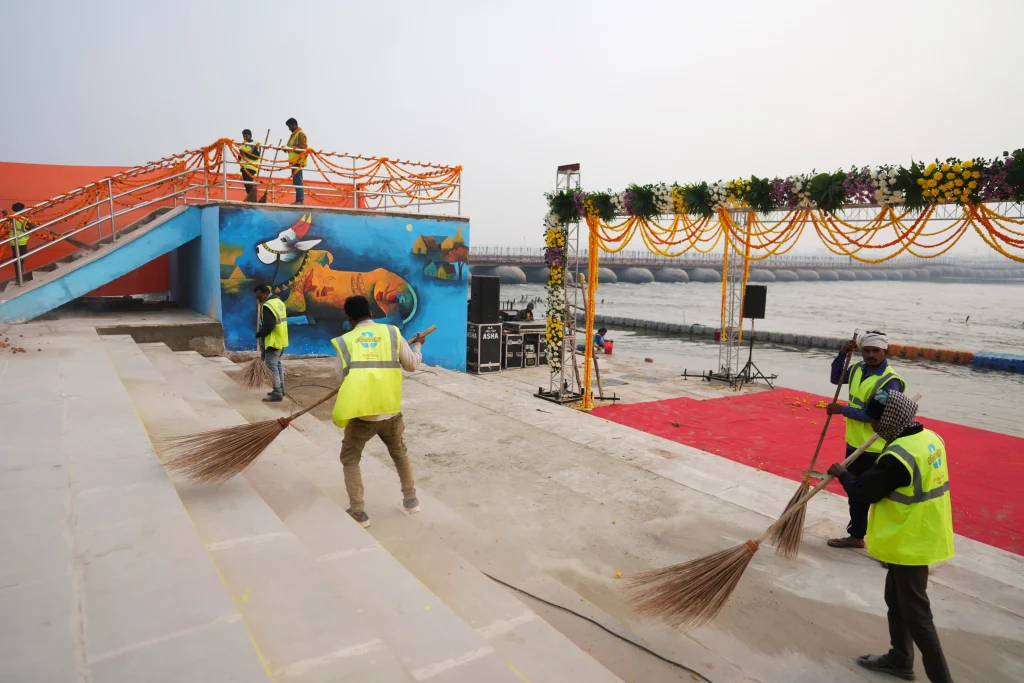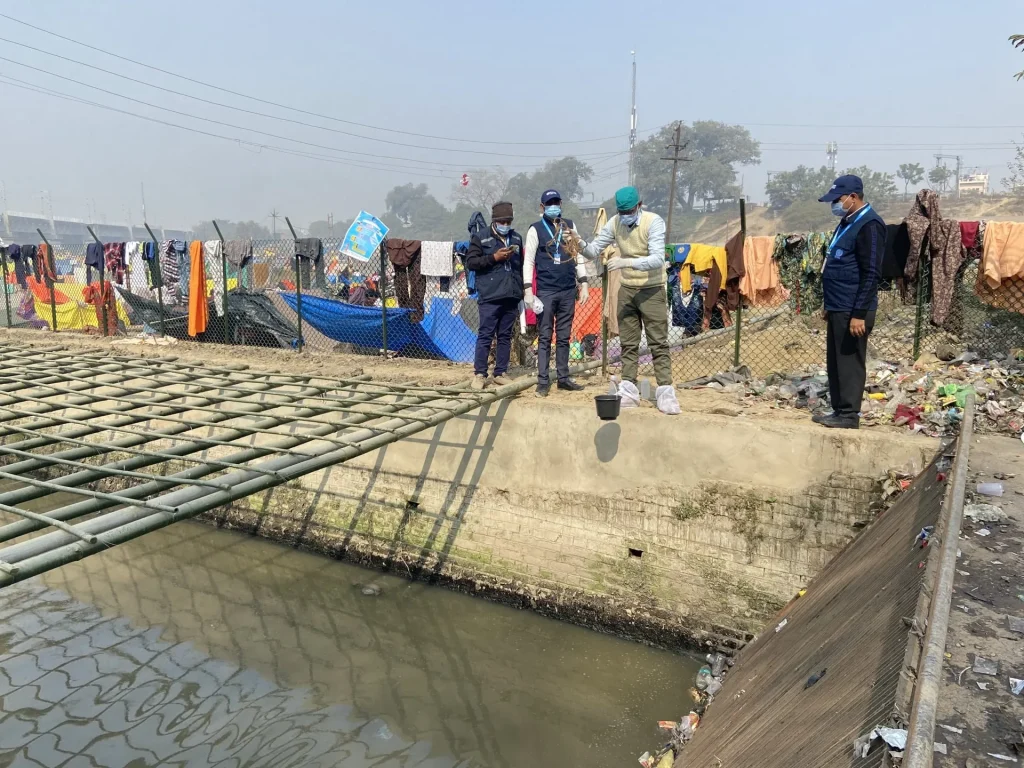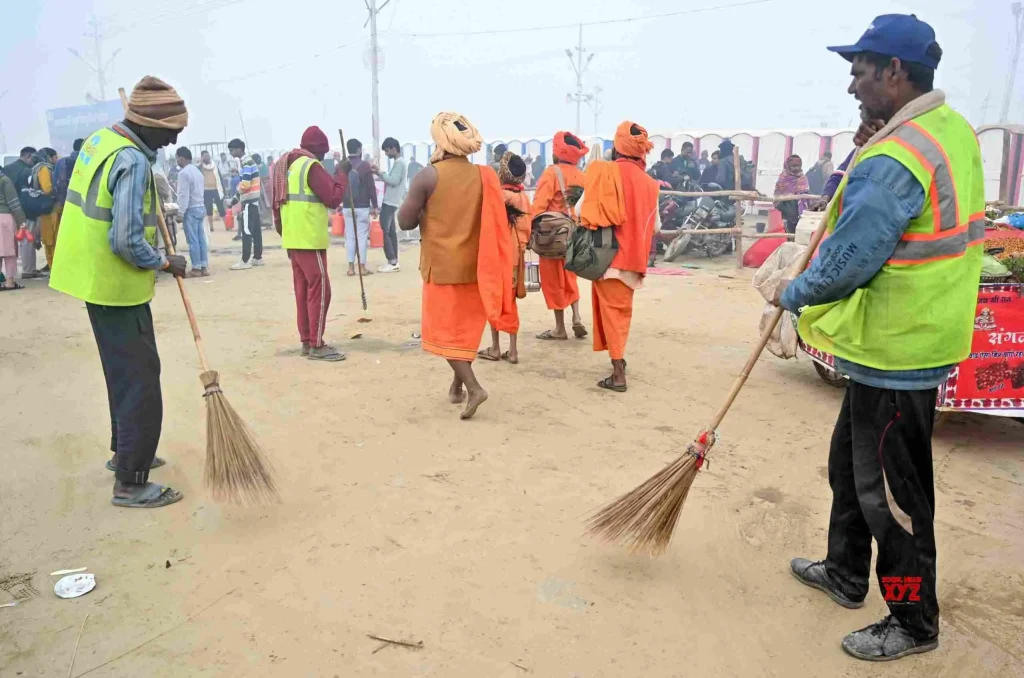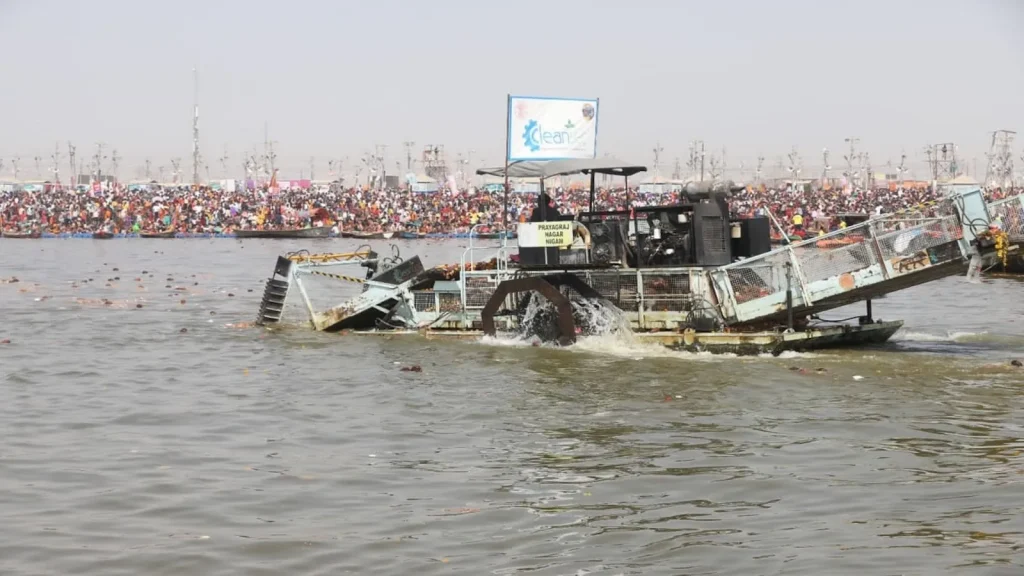The Maha Kumbh in Prayagraj attracts millions of devotees daily, making sanitation a major challenge. To maintain hygiene, private and government agencies have deployed an extensive cleaning operation. Over 1 crore litres of cleaning solutions have been used to sanitize the Mela region, covering 1.5 lakh toilets. Additionally, 3.5 lakh kg of bleaching powder, 75,600 litres of phenyl, and 41,000 kg of malathion have been distributed to ensure hygiene across the area.

Eco-Friendly Cleaning Solutions Used
The Uttar Pradesh government, under Chief Minister Yogi Adityanath’s directive, has mandated the use of eco-friendly cleaning solutions. Authorities are collaborating with Bangalore University to develop advanced oxidation technology for toilet sanitation. This initiative ensures a hygienic environment while minimizing environmental impact.

Robust Waste Management System
A strong waste management system has been implemented to handle the massive waste generated at the event. Around 650 metric tonnes of garbage are processed daily at the Baswar plant in Prayagraj. Additionally, 350 suction machines have been deployed to manage wet waste effectively. To prevent pollution in the rivers at Sangam, three temporary sewage treatment plants (STPs) have been installed alongside three permanent STPs in the city.

Strict Monitoring and Supervision
Sanitation efforts are closely monitored by medical officers, supervisors, and sectoral in-charges. The nodal officer for sanitation services, Akansha Rana, highlighted the scale of operations, stating that sanitation workers have been provided with 70,827 litres of cleaning agents, 70,582 litres of phenyl concentrate, 1,675 kg of naphthalene balls, and 39,812 kg of malathion dust. Bangalore University’s oxidation technology has played a crucial role in maintaining a fresh and hygienic environment.
Better Living Conditions for Sanitation Workers

To support sanitation workers, the Mela administration has taken proactive steps to improve their living conditions. Model sanitation colonies have been established, providing workers with access to clean drinking water, electricity, and toilets. Additionally, primary schools and Anganwadi centres have been set up for their children. Workers now receive wages directly in their bank accounts on a fortnightly basis, eliminating middlemen. Free meals are provided through community kitchens, and workers are covered under health, life, and accidental insurance schemes.
The Maha Kumbh’s sanitation drive is a large-scale effort ensuring cleanliness while prioritizing the well-being of sanitation workers. With strict waste management, eco-friendly solutions, and advanced technology, the event continues to focus on hygiene and environmental responsibility.
